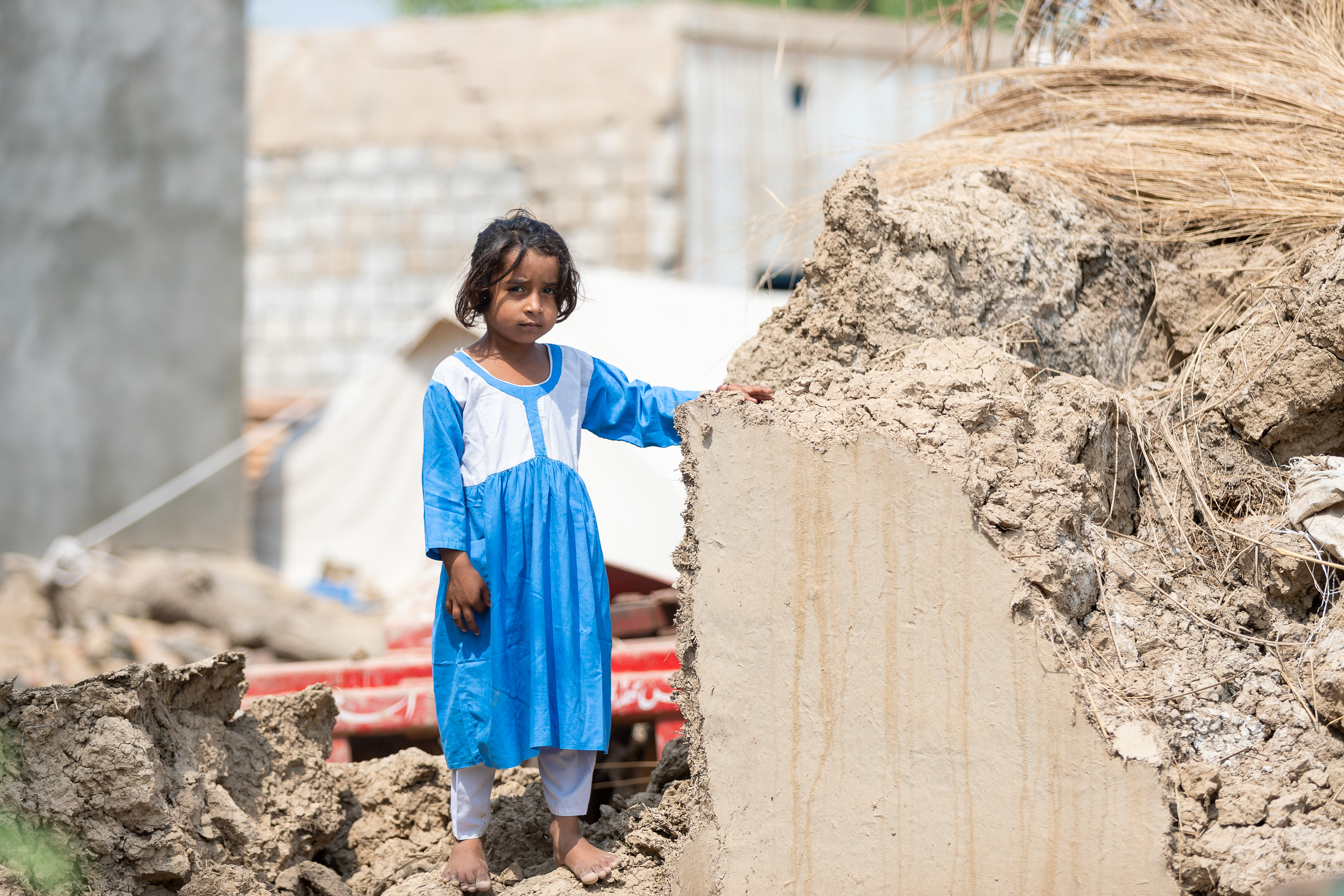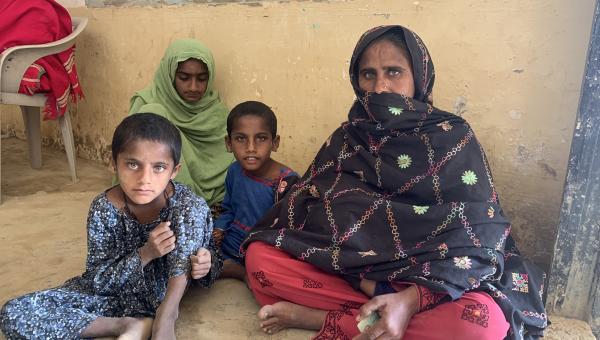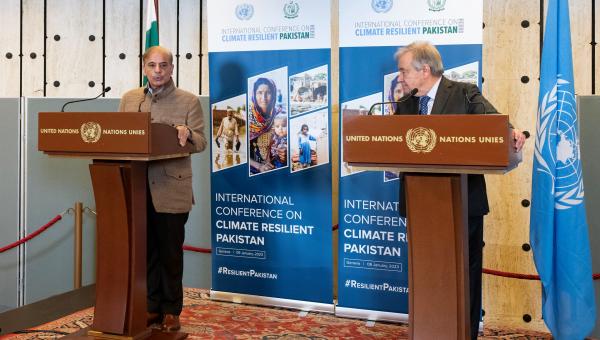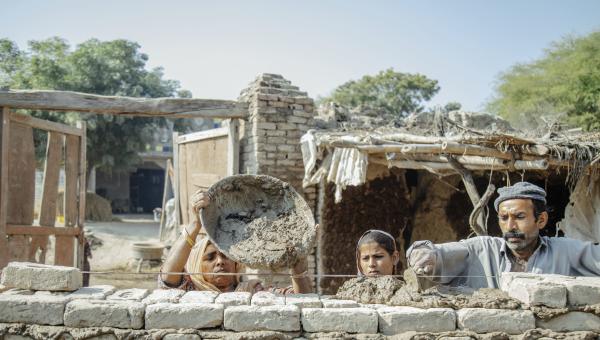UNDP Pakistan
RESILIENT FLOOD RECOVERY VISION 2022

Pakistan was impacted by the severest monsoon in a decade. The rains have impacted 33 million people, and more than 1,500 people have died. More than two million houses have been damaged, and over 3.5 million acres of crops have been lost, with farmlands, orchards, bridges, and road networks destroyed.
The scale and magnitude of the current floods is unprecedented due to extreme rainfall, combined with record levels of melting glacier ice water. The events are a grave manifestation of climate change induced disaster leaving one-third of the country underwater.
UNDP's Value Proposition in the Climate Change Disaster Response
The heavy rainfall due to changing weather patterns, and melting glacier ice caused by climate change, are the key underlying causes of the devasting floods in Pakistan. Similar extreme weather events and disasters will become more frequent and intense in the future. The segments of society with the highest vulnerability to climate change, and who will be impacted the most, are the poorest with the least resources to adapt to the new climate reality.
In this new development paradigm, climate action and disaster risk reduction go hand-in-hand. More risk reduction and resilience building efforts will be integrated into response and recovery strategies of the humanitarian organizations, development partners and the Government of Pakistan to adapt to the impact of climate change and protect the most vulnerable. The current climate catastrophe has clearly highlighted Pakistan’s climate vulnerability and the urgent need for investing in national disaster preparedness and resilience building.

Our Vision
UNDP's vision of resilient and integrated recovery - in tune with UNDP's Crisis Offer - will be guided by the needs on the ground and government priorities, while implemented in coordination with humanitarian and development partners. UNDP’s approach to resilient recovery in Pakistan spans the humanitarian-development nexus, and will bridge short, medium- and long-term dimensions of the response, with underlying principles of gender equality and environmental sustainability integrated into all activities.
$30
MILLION
0-6 months
$60
MILLION
6-18 months
Given immediate needs of the affected population due to upcoming winter and rising health risks, UNDP will in the short-term (0-6 months) support communities to stabilize through restoration of basic community infrastructure, livelihoods, and reinstatement of core governance functions.
In the medium and long term (6-24 months), UNDP will contribute to a resilient social, physical, environmental, and economic transition, as well as build capacity of national and local institutions to reestablish governance systems and the provision of service delivery. The activities will follow a USD 30 million (0-6 months), plus USD 60 million approach (6-24 months), approach with the aim of delivering a total of USD 90 million within the 2-year recovery window.
Scope of UNDP's Resilient Recovery Strategy
The four pillars of UNDP's resilient recovery strategy include:
- Housing and Community Infrastructure: With a view to reducing the burden on the scarce lifesaving humanitarian resources and to prevent secondary disasters such as disease outbreaks, human trafficking, resorting to violent extremism, Gender Based Violence (GBV), crime or other undesirable coping strategies.
- Livelihood Recovery: UNDP livelihoods and economic recovery has a three-track approach; to take actions to stabilizing livelihoods; to support local economic recovery through employment and income generation; and to generate sustainable employment and inclusive economic growth over the longer-term.
- Restoring Governance Systems: UNDP helps restore public administrative capacities by enabling the government apparatus at various levels to restore essential service delivery that has been disrupted in the flood-affected areas in Pakistan.
- Disaster Resilience and Environmental Protection: Using recovery as an entry point, UNDP will support the integration of climate and disaster risk reduction in recovery interventions to address underlying vulnerabilities and strengthen resilience of communities towards floods.
DOWNLOAD THE UNDP pakistan resilient flood RECOVERY VISION

Grounded in Partnerships
UNDP places critical importance in building partnership for integrated recovery in crisis and post crisis in support of local and national governments. UNDP works with national and local governments, donors, UN agencies, the private sector, Non-government Organizations (NGOs), and Civil Society Organizations (CSOs) and communities to assess needs, design strategies and implement solutions to improve capacities and systems to prevent and cope with crises and “Building Back Better.”
UNDP is actively coordinating with partners, including the European Union (EU), World Bank (WB), Asian Development Bank (ADB), the Japan International Cooperation Agency (JICA), and UN agencies, with lead roles in Disaster Risk Reduction, Livelihoods and Community Physical Infrastructure to fully assess economic losses and recovery needs in a Post Disaster Needs Assessment (PDNA) exercise requested by the government.

 Locations
Locations




